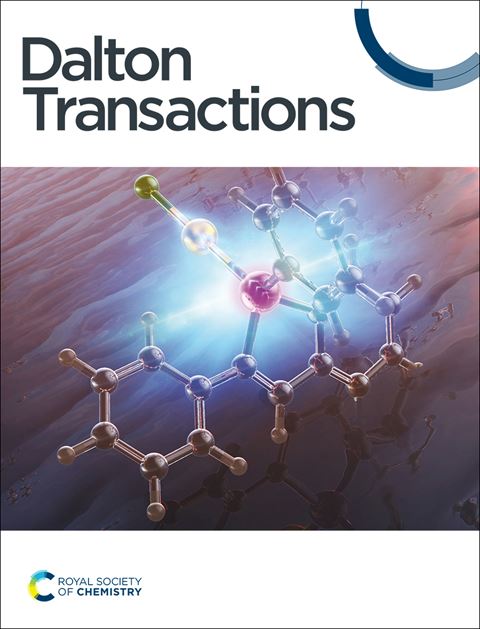Fe(III) and Ni(II) Imidazole-Benzimidazole Mixed-Ligand Complexes: Synthesis, Structural Characterization, Molecular Docking, DFT Studies, and Evaluation of Antimicrobial and Anti-Inflammatory Activities
IF 3.5
3区 化学
Q2 CHEMISTRY, INORGANIC & NUCLEAR
引用次数: 0
Abstract
This work delves into the synthesis, characterization, and bioactivity of new metal complexes of Imidazole-based ligand (IM) and a Benzimidazole-based ligand (BZ) with Fe(III) and Ni(II) ions. A broad scope of characterization techniques, including elemental analysis, IR spectroscopy, magnetic moment measurement, electronic spectrum, mass spectrometry, thermal analysis, and DFT calculations, ensured the successful preparation of the complexes, establishing a 1:1:1 (M:IM:BZ) stoichiometry. Both the NiBZIM and FeBZIM complexes possessed octahedral geometry with coordinated one water and two waters of Fe(III) and Ni(II), respectively. Calculation by the DFT model demonstrated that the reduction of energy gap and rise of softness for the metal complexes resulted due to metal coordination, enhancing reactivity and forecasted biological activity of the complexes. FeBZIM and NiBZIM complexes exhibited strong antimicrobial activity, whereas both complexes displayed improved efficacy towards Gram-positive as well as Gram-negative bacteria compared to their corresponding free ligands. Their activities were comparable to the standard antibiotic Chloramphenicol. Furthermore, these complexes also exhibited good antifungal activity towards Aspergillus niger as well as Candida albicans, surpassing the free ligands. MIC values also ensured enhanced antimicrobial activity of the metal complexes. Other than these operations, the complexes demonstrated great anti-inflammatory activity of which FeBZIM complex was the strongest with a direction towards the reference drug IC50. Molecular docking against E. coli FabH–CoA complex (PDB ID: 1HNJ) and Human Cyclooxygenase-2 (COX-2) (PDB ID: 5IKT) that the FeBZIM complex exhibited the best binding affinity with the establishment of several hydrogen bonds with key amino acid residues, suggesting a favorable antibacterial activity. Overall, the newly synthesized FeBZIM and NiBZIM complexes demonstrate immense potential as novel antimicrobial and anti-inflammatory drugs with enhanced efficacy relative to their free ligands.Fe(III)和Ni(II)咪唑-苯并咪唑混合配体配合物:合成、结构表征、分子对接、DFT研究以及抗菌和抗炎活性评价
本文研究了咪唑基配体(IM)和苯并咪唑基配体(BZ)与Fe(III)和Ni(II)离子的新型金属配合物的合成、表征和生物活性。广泛的表征技术,包括元素分析、红外光谱、磁矩测量、电子谱、质谱、热分析和DFT计算,确保了配合物的成功制备,建立了1:1:1 (M:IM:BZ)的化学计量。NiBZIM和FeBZIM配合物均具有八面体结构,分别为Fe(III)和Ni(II)的一水和两水。DFT模型计算表明,金属配合物的能隙减小,柔软度升高,反应性增强,预测了配合物的生物活性。FeBZIM和NiBZIM配合物表现出较强的抗菌活性,而这两种配合物对革兰氏阳性菌和革兰氏阴性菌的抑菌效果均优于其相应的游离配体。其活性与标准抗生素氯霉素相当。此外,这些复合物对黑曲霉和白色念珠菌也表现出良好的抗真菌活性,优于游离配体。MIC值也保证了金属配合物的抗菌活性增强。除上述操作外,复合物均表现出较强的抗炎活性,其中FeBZIM复合物最强,并向参考药物IC50方向发展。FeBZIM配合物与大肠杆菌FabH-CoA复合物(PDB ID: 1HNJ)和人环氧合酶-2 (PDB ID: 5IKT)的分子对接表明,FeBZIM配合物与大肠杆菌FabH-CoA复合物(PDB ID: 1HNJ)和人环氧合酶-2 (PDB ID: 5IKT)的结合亲和力最好,与关键氨基酸残基建立了多个氢键,表明其具有良好的抗菌活性。总的来说,新合成的FeBZIM和NiBZIM配合物作为新型抗菌和抗炎药物具有巨大的潜力,相对于它们的游离配体具有更高的疗效。
本文章由计算机程序翻译,如有差异,请以英文原文为准。
求助全文
约1分钟内获得全文
求助全文
来源期刊

Dalton Transactions
化学-无机化学与核化学
CiteScore
6.60
自引率
7.50%
发文量
1832
审稿时长
1.5 months
期刊介绍:
Dalton Transactions is a journal for all areas of inorganic chemistry, which encompasses the organometallic, bioinorganic and materials chemistry of the elements, with applications including synthesis, catalysis, energy conversion/storage, electrical devices and medicine. Dalton Transactions welcomes high-quality, original submissions in all of these areas and more, where the advancement of knowledge in inorganic chemistry is significant.
 求助内容:
求助内容: 应助结果提醒方式:
应助结果提醒方式:


